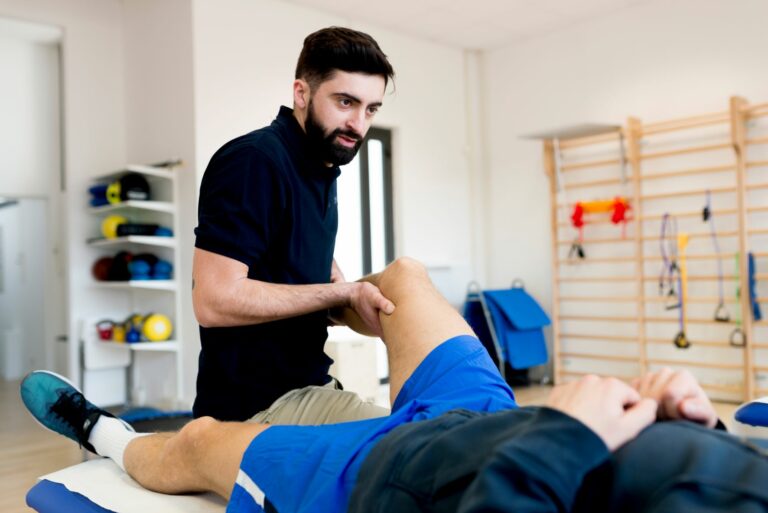The relentless struggle against hip pain is a familiar journey for many people. Hip pain can creep into your life, disrupting the rhythm of your daily routine. From those initial twinges to the daily grind of discomfort that chips away at your vitality, it’s a journey that tests both body and spirit.
Understanding what leads to hip pain in the first place and why it gets worse is as important as exploring potential solutions and proactive approaches to prevention.
The unhappy hip patient:
Picture this: You’ve had years of hip pain that would come and go after prolonged sitting. Gradually, everyday tasks become challenging – from the simple act of putting on socks and shoes to your morning walks. Soon you find yourself forgoing the joys of gardening due to difficulty kneeling. The tipping point arrives when even the solace of sleep is disrupted by persistent hip pain, leading you to the orthopedic surgeon’s office. X-rays reveal a grim diagnosis – “bone on bone” – signaling the need for a total hip replacement.
Hip pain relief after surgery:
The decision for a total hip replacement is made, and incredibly, immediate relief follows. Sitting, standing, and walking bring you significantly less pain. The surgeon’s advice echoes in your ears: “walk, walk, and walk some more.” So, you do, despite some bothersome pain in your low back and even occasionally in your hip. Yet, despite the initial improvement, nine months later, the shadow of hip and low back pain lingers. A return visit to the surgeon brings good news on the X-ray front, and you’re told to try physical therapy.

Unveiling the underlying issues causing hip pain:
Enter the world of physical therapy, where, as movement experts, PTs approach patient care holistically and focus on determining the root cause of pain, dysfunction and injury. In assessing a patient’s chronic hip pain after total hip replacement, weak gluteal muscles, thigh muscles, and core muscles surface as culprits, likely weakened over the years of pain, limping, and decreased physical activity. Further investigation often reveals scar tissue and soft tissue tightness that cause tenderness and movement restriction.

It becomes evident that despite a commitment to walking, which is excellent for cardiovascular health and mental well-being, if a hip replacement patient does not also incorporate other types of exercise, they fall short in addressing the full spectrum of recovery needs.
Resistance training, stretching and balance work are critical parts of recovery, and hands-on care to address the soft tissue trauma caused by surgery is equally important.
Physical therapy — early intervention for hip pain:
Hindsight may be 20/20, but for the unhappy hip patient, the lesson learned is invaluable – consider physical therapy at the onset of pain. Early intervention equips patients with exercises to stretch joints and muscles, strengthening the lower extremity and potentially delaying the need for surgery for years or even eliminating the need completely. It becomes a proactive approach to managing hip health and preserving the quality of life.
Post-Surgery rehabilitation:
For those who do undergo hip replacement surgery, the journey doesn’t end in the operating room.
Physical therapy is a crucial component in the post-surgery recovery. Three to six weeks after the procedure, a visit to the physical therapist becomes pivotal.
Manual therapy techniques are employed to reduce scar tissue and tenderness, and personalized stretching routines are designed based on the surgery technique. The focus shifts to rebuilding strength in the muscles essential for everyday activities – from leisurely walks by the river to conquering stairs or those gardening projects.

The tale of the unhappy hip patient takes a positive turn with the incorporation of physical therapy into the recovery journey. It’s a narrative of early intervention, exercises tailored to individual needs, and a commitment to rebuilding strength and mobility. Whether it’s preventing surgery or optimizing post-surgery outcomes, physical therapy emerges as a beacon of hope for those grappling with hip pain, offering a path toward a more active, pain-free life.
If you are suffering with hip pain, be sure your daily routine includes the following:
- Hip Flexor Stretches: Gently stretching the hip flexor muscles can help alleviate tension and improve flexibility. Incorporating standing and kneeling hip flexor stretches into the routine can be beneficial.
- Strengthening Exercises: Building strength in the muscles surrounding the hip joint is crucial for stability. Exercises including leg lifts, bridges, and clamshells can target these muscle groups effectively.
- Low-Impact Aerobic Activities: Engaging in activities such as swimming or cycling can provide cardiovascular benefits without putting excessive strain on the hip joint.

Hips hurt? Try PT.
As physical therapists, we know the importance of movement for overall health and well-being. From injury recovery to achieving optimal performance, our passion is to help every patient reach their goals and live an active, pain-free life.

